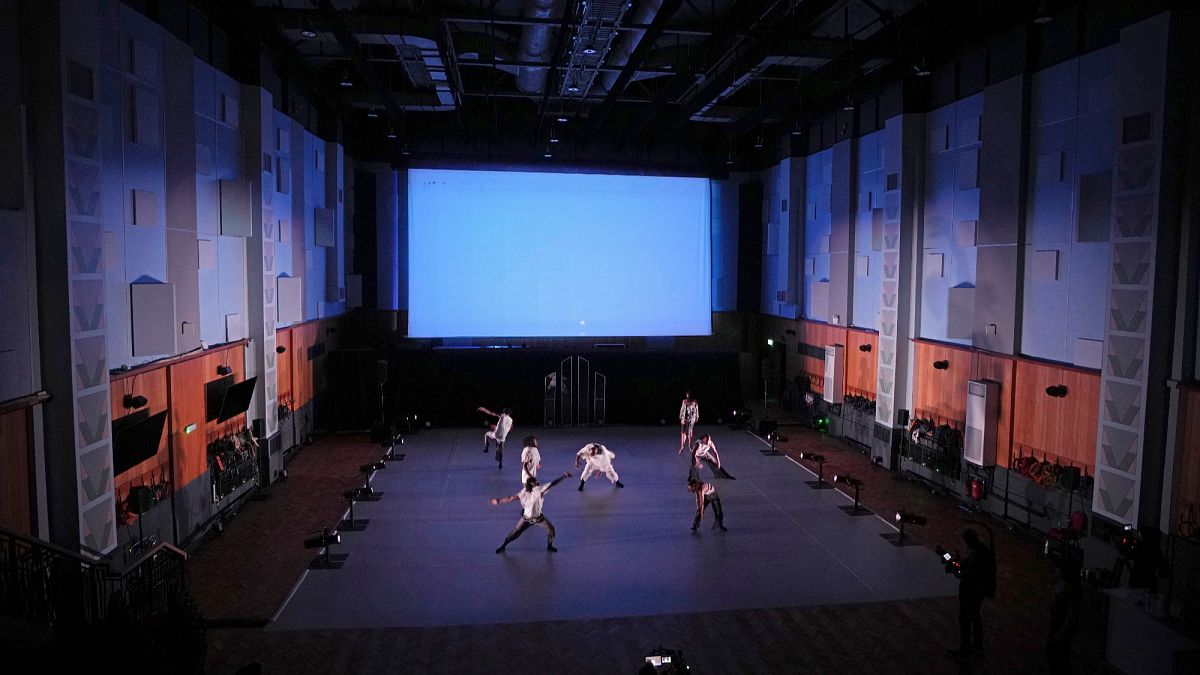Swedish composer Jacob Mühlrad explains what his new robotic cellist can add to the classical music world, and what it can't.
As the orchestra assembled for the final piece of the evening at Malmö Live Concert Hall, there was an unusual member in the pit.
No human performed the cello solo for Swedish composer Jacob Mühlrad’s latest piece. Instead, it was a robot.
Around the propped up cello, two mechanical arms protruded from the ground. One held the bow, attached to robotic appendage directly instead of lightly held between a person’s grasp, with the other using a cylindrical hub of pads to press the neck.
Veer (bot), as the robot is known, has been programmed to play the piece, ‘Veer’, perfectly. As the rest of the orchestra swells, Veer (bot) effortlessly exerts long drawn out notes standing apart – emotionally and physically – from the human musicians.
This isn’t a brute machine imprecisely whacking a bow against four strings. Everything has been thought through. “Even the vibrato can be programmed,” Mühlrad tells Euronews Culture.
Mühlrad is the composer behind Veer (bot)’s professional debut. The 33-year-old wunderkind reached out to fellow Swedish composer and researcher Frederick Gran about his robot creation, the Cello Concerto No. 1.
“We started a conversation and every week we spoke, he developed something new,” Mühlrad recalls.
As Gran added features from synchronisation to tonal capabilities, Mühlrad wondered if the robot had ever played with an orchestra. It hadn’t, and so his next goal was composing a work for the robot to perform live with a full orchestra was born.
As the final piece in a portrait concert of Mühlrad’s work by the Malmö Symphony Orchestra, ‘Veer’ was composed purposely for the addition of the new mechanical cellist. Although Mühlrad notes the potential for a future version of the robot to respond to a conductor like a regular player, this time, the Veer (bot) was entirely pre-recorded down to the tiniest details.
Unconstrained by the limitations of human biology, Veer (bot) can feasibly perform impossibly complex pieces.
“I think it’s very similar to a MIDI Keyboard,” Mühlrad says, explaining how musicians now programme digital keyboards to play pieces beyond the ability of human fingering. “Perhaps it’s more complex as there are more musical parameters at the cello,” he notes qualities like intonation and bow pressure which alter the sound of the string instrument.
While the performance of ‘Veer’ was a comparatively straightforward piece, Mühlrad envisions using the technology for finding music in the spaces where human performance can’t reach. From a microtonal piece for a quartet of robots to impossibly slow glissandos, the composer’s mind boggles at the possibilities.
Nonetheless, Mühlrad is unequivocal about the difference humanity makes to music.
“The human is… you can’t even compare it,” he says. “To see a human being grip the cello and project their own inner expression, that’s pure magic.”
Interpretation is one of the key elements of classical music. Whether it’s intentional, such as a musician emphasising melodic lines within a Bach fugue to the unintentional, the performer who hasn’t slept or is excited by a huge audience, “all those aspects of being a human and playing music that reflects your state of being, they can’t be replaced by a robot,” Mühlrad says.
Where the Veer (bot) comes into play is as a new tool at the disposal of the musician. Mühlrad envisions music that incorporates both the human and robot cello player side-by-side as complementary instruments with differing functions.
The complexity of musical interpretation isn’t gone from the Veer(Bot), it’s just placed entirely in the palm of the composer instead of the orchestra conductor. ‘Veer’ may have been a simple piece, but Mühlrad chose it over inhuman feats to “show the soul and capture the expression of the robot”.
Even with the level of pre-programming done by Mühlrad and Gran, there was still room for unintentional interpretation.
“At the concert at Malmö, there was one moment where there was slightly too little pressure, and that created a harmonic tone which sounded one octave above the note,” the composer says. It’s a small moment, but one that showcases the breadth of live music’s interpretive complexity.
Is the music as emotionally powerful as that made by a human?
“People are crying all the time to an electronic synthesiser,” Mühlrad retorts. For him, Veer (bot) is an exciting tool that can complement a composer’s arsenal.
He bristles at the suggestion it could ever replace the work of human musicians.
“When people ask the same questions, like with the ABBA Voyage hologram concerts, ‘are we not going to see any artists anymore like on stage?’ I think it's just another medium growing,” Mühlrad says. “I wouldn’t be afraid. Humans, they can’t be replaced.”

 4 months ago
39
4 months ago
39






 We deliver critical software at unparalleled value and speed to help your business thrive
We deliver critical software at unparalleled value and speed to help your business thrive






 English (US) ·
English (US) ·